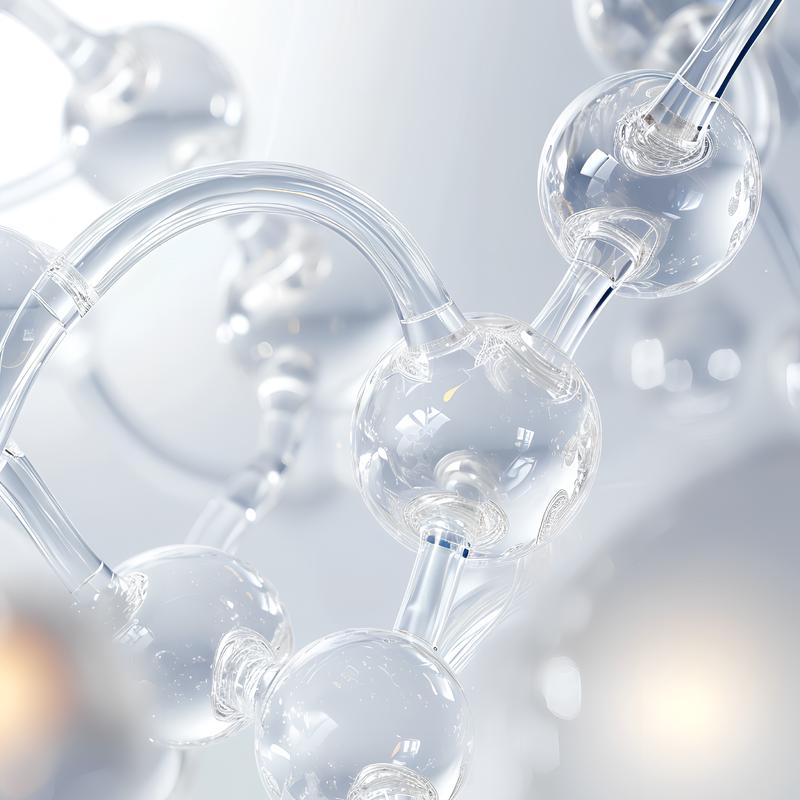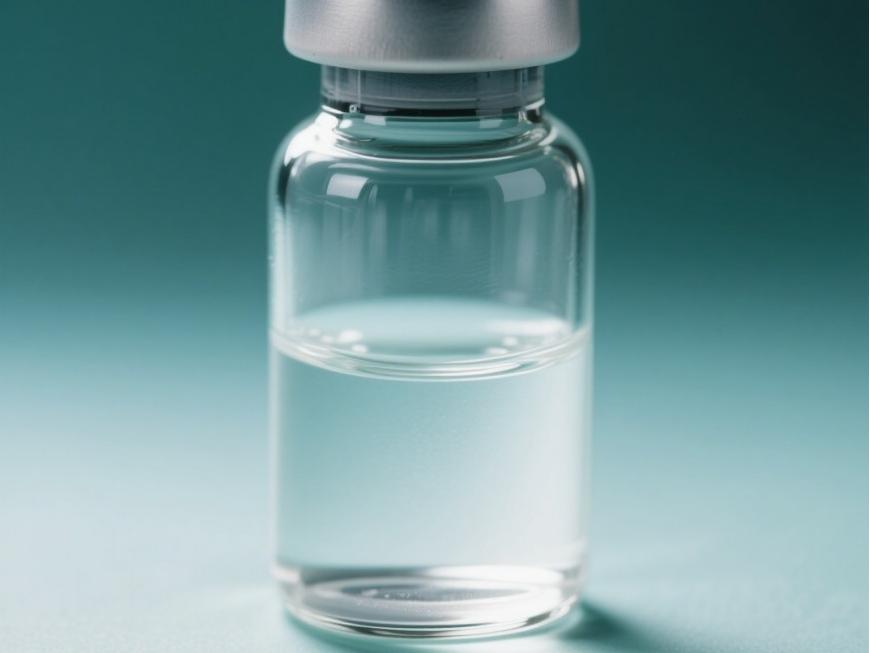Cosmetic-Grade Hyaluronic Acid Empowers Skincare Product Innovation
루 론 산 (HA) is a naturally occurring acidic mucopolysaccharide composed of disaccharide units of D-glucuronic acid and N-acetylglucosamine [1]다다. It is widely distributed throughout human skin, the extracellular matrix, and connective tissue, serving as a key component in maintaining skin hydration and elasticity.As a biocompatible polymer with exceptional properties, hyaluronic acid exhibits a broad molecular weight range, spanning from low to ultra-high molecular weight. Its structure contains numerous hydrophilic functional groups, including hydroxyl and carboxyl groups, conferring outstanding water-binding and solubilising capabilities.
루 론 산 파우더 presents as a white to off-white powder or fibrous solid, with no noticeable odour. It dissolves readily in water but is virtually insoluble in organic solvents. Its molecules form strong hydrogen bonds to trap vast quantities of water molecules, exhibiting water absorption capacity thousands of times its own weight—far surpassing typical polysaccharides. Consequently, it is acclaimed as a ‘natural moisturising factor’ [3-4] and is highly regarded in cosmetics as an exceptionally effective hydrating ingredient.
With advancing research, hyaluronic acid demonstrates exceptional performance in cosmetic applications. It enhances product hydration, improves skin feel, strengthens formulation stability, and is suitable for diverse product categories including serums, masks, creams, and lotions.
Green Spring Technology specialises in supplying cosmetic-grade 히알루론산 파우더, offering the following advantages:
· High-purity refinement: Employing advanced purification techniques, our products feature low impurity levels, ensuring safety and mildness suitable for all skin types;
· Comprehensive molecular weight coverage: We provide a full spectrum of products ranging from low to ultra-high molecular weights, meeting diverse formulation requirements for permeability, film-forming properties, and viscosity;
· Exceptional moisturising efficacy: Possesses outstanding water-binding capacity, significantly prolonging product hydration duration and enhancing skin's moisturised feel;
· Superior formulation compatibility: Compatible with common cosmetic ingredients, facilitating formulation design with strong stability;
· Consistent and reliable quality: Strict adherence to cosmetic raw material standards, with each batch undergoing multiple parameter tests to ensure uniform quality.
1 Hyaluronic Acid: Empowering Cosmetic Innovation Through Exceptional Performance
Hyaluronic acid is a naturally occurring high-molecular-weight polysaccharide. Its molecular surface is rich in active functional groups including carboxyl, hydroxyl, and N-acetamido groups. This enables versatile modification through cross-linking, esterification, grafting, and other methods. Furthermore, it forms highly efficient hydrogen bonds with water molecules, granting it exceptional water-retaining capabilities. Research indicates that 1 gram of hyaluronic acid can adsorb up to 6 litres of water, far exceeding common moisturising ingredients [8], making it widely employed as a highly effective moisturising agent in cosmetics.
1.1 Superior rheological properties enhance product texture
In solvents, hyaluronic acid forms a three-dimensional network structure that significantly influences the rheological behaviour of the system. Its molecules unfold and occupy substantial space; as concentration increases, intermolecular or intramolecular chain interactions progressively construct a continuous network framework. This enhances the solution's viscosity and elasticity, delivering a distinctive skin feel and application performance [9].. This structure exhibits sensitivity to ionic strength and pH conditions [10]. In low ionic strength solutions, charge repulsion facilitates greater molecular extension, further increasing system viscosity [11]. At concentrations exceeding 1%, hyaluronic acid forms a stable network structure, with high molecular weight variants demonstrating particularly pronounced effects and more significant physical property alterations [12-13].
1.2 High-Efficiency Application for Premium Product Experiences
Although hyaluronic acid is typically incorporated at low concentrations in mid-to-high-end cosmetics, this stems partly from its raw material characteristics and partly from its exceptional performance. Natural hyaluronic acid exhibits strong hydrophilicity and moderate environmental sensitivity [14]. Practical applications require careful consideration of dissolution processes and formulation environments to prevent uneven dispersion or excessive system viscosity caused by its high water absorption [15].
1.3 Significant Advantages in Cosmetic Applications
Within cosmetics, hyaluronic acid delivers exceptional moisturising sensations, smooth textures, and stable formulations through its outstanding hydration, film-forming properties, and rheological regulation capabilities. Widely incorporated into serums, masks, lotions, creams, and other categories, it stands as a key functional ingredient for elevating product quality.
2. Applications of Hyaluronic Acid
2.1 Applications in Cosmetics
Owing to its unique molecular structure, hyaluronic acid powder has become a widely employed moisturizing ingredient in cosmetics. Compared to other common moisturisers, it demonstrates superior hydration performance across varying environmental humidities, meeting the moisturising requirements of diverse cosmetic formulations [16]. Its texture is refreshingly lightweight, non-greasy, and unlikely to clog pores.
As a natural polymer, hyaluronic acid possesses excellent lubricating and film-forming properties. Cosmetics incorporating hyaluronic acid deliver a smooth application and comfortable experience. It forms a protective film on the skin's surface, imparting a smooth, hydrated feel while aiding epidermal protection.
Furthermore, hyaluronic acid powder may be employed alone or in combination with phospholipids within water-based or oil-based cosmetic formulations, functioning as a natural emulsifier. Its green and safe properties render it suitable for diverse skincare products including creams, lotions, and cleansers. Hyaluronic acid with molecular weights exceeding 3000KD exhibits high viscosity, making it an effective thickening agent.
Macromolecular hyaluronic acid not only forms a protective film on the skin's surface but also encapsulates smaller molecules within its vesicular structure. This property is particularly advantageous in fragrance-containing products, where it binds with and encapsulates fragrance molecules. This encapsulation helps delay fragrance evaporation, prolonging scent longevity while reducing potential skin irritation from direct contact with fragrance compounds.
Hyaluronic acid naturally exists within skin tissue, aiding in the regulation of water, protein, and electrolyte transport.
Exogenous supplementation of hyaluronic acid enhances the skin's inherent moisturising mechanisms. Low-molecular-weight hyaluronic acid powder penetrates deeper into the skin, aiding nutrient absorption and metabolic waste removal. This supports skin health and prolongs the adherence of makeup and lip products. Consequently, hyaluronic acid is extensively utilised in beauty salons and cosmetic manufacturing. Research by Loureiro Borghetti et al. [17] indicates that hyaluronic acid solutions at specific concentrations stimulate collagen synthesis.
Further research indicates that hyaluronic acid contributes to maintaining healthy skin and offers protective effects for collagen. Incorporating hyaluronic acid into hair care products also helps preserve hair's smoothness and lustre.
2.2 Applications and Potential of Hyaluronic Acid in Oral Health
Hyaluronic acid powder finds extensive application in oral health due to its excellent biocompatibility, moisturising properties, and restorative support.As a naturally occurring component in periodontal tissues, it aids in maintaining oral soft tissue health, improving the oral environment, and supporting post-operative recovery.
In oral care, hyaluronic acid is often used synergistically with cleaning techniques to assist in reducing gingival sulcus bleeding and plaque accumulation, thereby optimising clinical oral conditions. Its high molecular weight variants possess excellent viscoelasticity and film-forming properties, enabling the formation of a protective barrier within the oral cavity to alleviate local discomfort.
Research indicates hyaluronic acid may also be employed in post-extraction or implant care, promoting wound healing, reducing redness and pain, and accelerating soft tissue recovery. It demonstrates potential in oral mucosal care, aiding in the repair of mucosal damage and alleviating discomfort.
요약하면,hyaluronic acid powder is a safe and effective oral care ingredient suitable for diverse products, including toothpaste, mouthwash, and oral gels, providing multifaceted support for oral health.

3 요약
Hyaluronic acid powder is a high-molecular-weight polysaccharide with a unique molecular structure, exhibiting an excellent balance of hydrophilic and hydrophobic properties. It can undergo chemical modification through esterification, amidation, and other methods to expand its application capabilities. As a green, safe, and environmentally friendly natural ingredient, hyaluronic acid holds broad application prospects in the cosmetics sector.
In cosmetic applications, hyaluronic acid excels through its exceptional moisturising properties, effectively capturing and retaining moisture to enhance skin hydration, improve texture, and refine appearance. Its excellent biocompatibility with human skin tissue allows it to gently replenish essential moisture, assisting in maintaining a healthy skin condition.
Green Spring Technology, as a supplier of high-quality hyaluronic acid powder, specializes in the research, development, and production of cosmetic-grade hyaluronic acid.Our products offer high purity, stability, and a range of molecular weights, making them suitable for serums, masks, creams, lotions, and oral care products. This enables brand partners to create safer, more effective skincare experiences. Discover Our Comprehensive Traceable And Compliant Hyaluronic Acid Powder Ingredient Solutions.
Please contact us at helen@greenspringbio.com or WhatsApp: +86 13649243917 for further technical documentation and collaboration opportunities regarding hyaluronic acid raw materials!
참조
[1] 왕장링 (Wang Jiangling), 런웨이즈 (Ran Weizhi)[식품영양학] 히알루론산과 그 유도체의 현황 및 개발동향 [J.헤이룽장의학, 2014, 37 (6), 117-118
[2]Lillian C. 베 커, 윌 마 F. Bergfeld, 도널드 V. 벨시토, 커티스 D. Klaasen, 제임스 G. 마크 주니어, 로널드 C. 생 크, 토마스 J. Slaga, 폴 W. 스나이더, 화장품 성분 검토 전문가 패널, 그리고 F. 앨런 앤더슨. 히알루로닉의 안전성 평가 최종 보고서 산성, 칼륨, Hyaluronate, 그리고 나트륨 Hyaluronate, 국제 독성학 저널. Vol. 28일, 아니. 2009년 7월/8월 4S
[3] 우동루, ed. Biochemistry of Sugars.북경:고등교육출판사, 1987:627
[4] 성우는 나가이 마사요시.화장품 재료다.JP Show 62-158203, 1987년
[5] 천종지, 구아일.히알루론산 [J]의 응용 및 생산.허난 화학 산업, 2007, 24, 48-49
[6]Palmieri B,Merighi A,Corbascio D,et al. 고정 조합 히알루론산과 콘드로이틴의 -증상 치료를 위한 무작위 이중 맹검, 위약 대조 연구에서 황산 경구 제형 비침식성 위식도 역류 환자에서 [J. Eur Rev 메드 Pharmacol Sci,2011,17 (24):3272-3278
[7] 저우판구, 마베이레이, 치우보 외.히알루론산/키토산 미립구가 염증성 조골세포에서 matrix metalloproteinase의 발현과 저해인자 mRNA에 미치는 영향 (J.중국실험외과학회지, 2013, 30(11):2377-2379
[8] Billek G,Billek D. 히알루론산 (Hyaluronic acid:the history of an active in-gredient in cosmetics) [독일어][J]. Parfuem Kosmet다. 1988년;69:788개 - 790;792-795
[9] Laurent TC,Structure of Hyaluronic Acid. 뉴욕,NY:Ac-ademic Press;1970
[10] Cleland RL,Wang JL,Detweiler DM,Polyelectrolyte proper- ties of sodium hyaluronate. 2:히알루론산의 전위차 적정. 거대분자 J다 [J다] 1982년;15:386-395
[11] Balazs EA,Laurent TC. 고분자 전해질로서 히알루론산의 점도기능 [J. J Polym Sci입니다. 1951년;6:665-667
-
Prev
Exploring Hyaluronic Acid Upgrades for Eye Health Product Solutions
-
다음
Empower Your Health Product Formulations with Green Spring Technology's Hyaluronic Acid Powder


 영어
영어 프랑스
프랑스 스페인
스페인 러시아
러시아 한국
한국 일본
일본




